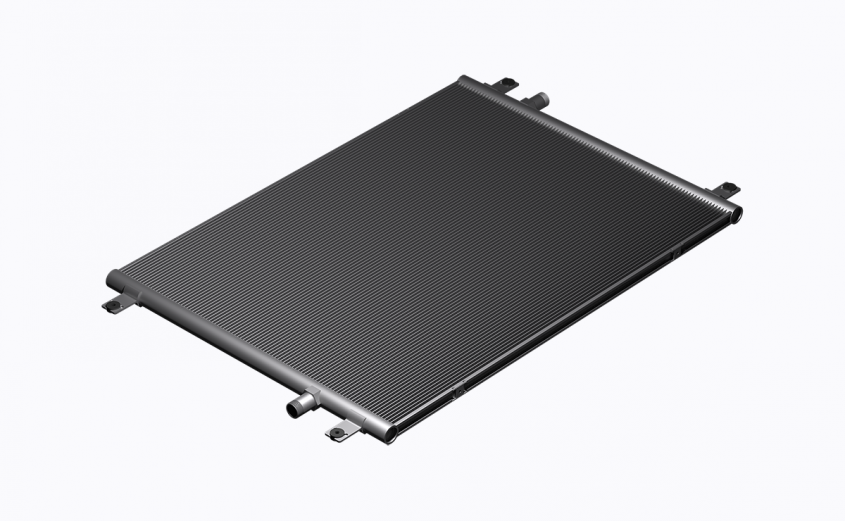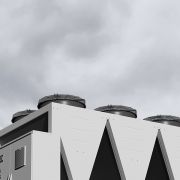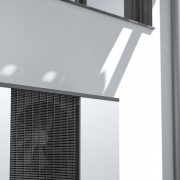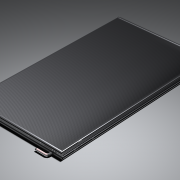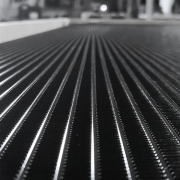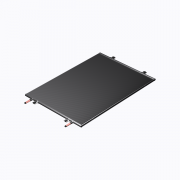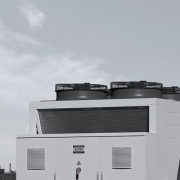Corrosion protection for microchannel heat exchangers
Corrosion is the deterioration of metals arising from the chemical reactions between a metal and the surrounding environment. In HVAC equipment, such as air-cooled chillers, condensers, and dry coolers, corrosion of the heat exchangers may lead to performance and efficiency losses, as well as to equipment failures.
In order to avoid unwanted corrosion, microchannel heat exchangers and chilled water system, in general, must be properly protected based on environmental conditions.
Corrosion Resistance Of Aluminium Alloys
Untreated aluminium is highly resistant to corrosion in most environments because of formation of a stable oxide layer in the pH range of 4 to 9 and prevents further oxidation. Although the longevity of aluminium is excellent in normal atmospheres, in highly polluted areas, especially in sulfurous environments, and in seashore environments corrosion may occur.
The first step to protect microchannel heat exchangers and extend the lifespan is choosing the appropriate aluminium alloys. The 3000 series aluminium alloys (Al-Mn-Cu) are widely used for microchannel tubes, while the composition of 3000 and 4000 series alloyed with 5.2% of silicon is perfect for aluminium fins. These alloys reveal excellent corrosion resistance, weldability, and offer good mechanical properties; increased corrosion protection can be achieved with additions of manganese and copper to the aluminium alloy.
Protective Coatings
When installed in corrosive environments such as seacoasts, industrial zones, and highly polluted areas, microchannel coils may require additional protection.
Electrocoating is a process that uses an electrical current to deposit an organic coating from a paint bath onto a heat exchanger body. Due to the ability to penetrate recesses and coat geometrically complex parts, electrocoat is used throughout various industries to coat a wide range of products including heat exchangers. Electrocoat, and specifically cathodic electrocoat, has enabled a remarkable improvement in corrosion resistance for microchannel heat exchangers over other coating methods:
- High level of protection and corrosion resistance
- Good adhesion
- Resistance to mechanical deformations
- Good chemical resistance
- Fully automated and reliable process
- Excellent thickness uniformity of the final coating (15 – 40 microns)
The results of SWAAT (ASTM G85:A3) corrosion tests show that the lifespan of e-coated coils is considerably extended compared to uncoated coils.
Multi-Metal Closed-Loop Systems
In most HVAC application, refrigerant circuits are multi-metal, and the points of electrical contact between dissimilar metals are subject to galvanic corrosion. One method of preventing galvanic corrosion is the elimination of direct bi-metal couplings.
For closed-loop chilled water systems, it is recommended that pH-neutral, molybdate-based multi-metal corrosion inhibitors be added to the cooling medium which is compatible with glycols and suitable for all water qualities.
Since microchannel tubes have sub-millimeter diameters, it is important to avoid particles entering the heat exchanger. For this purpose, it is recommended to install a mesh strainer with a sieve size of 0.25mm or less.
Cleaning
The build-up of dirt on the aluminium surface which is exposed to moisture can reduce the durability of the heat exchanger. At the same time, regular cleaning of the heat exchanger ensures the constantly high efficiency of the HVAC equipment.
Microchannel coils can be easily cleaned due to their thin profile. The best cleaning method is rinsing with pure water, without any chemicals and additives. To simplify the cleaning procedure and avoid system downtime due to manual cleaning, we offer RoboClean™ – an automatic coil cleaning system which determines the need for cleaning by reading from air differential pressure transmitters and initiates the coil cleaning procedure when the pressure difference rises above a set point. Cleaning is performed by spraying water onto the coils by rotating nozzles.

